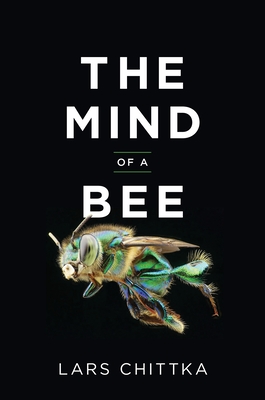
The Mind of a Bee
By: Lars Chittka
Format: 272 pages, Hardcover
A rich and surprising exploration of the intelligence of bees Most of us are aware of the hive min…
Want to Read $ 9.99"American writer and biologist Frederick Kenyon (1867-1941) was the first to explore the inner workings of the bee brain. His 1896 study, in which he managed to dye and characterize numerous types of nerve cells of the bee brain, was, in the words of the world's foremost insect neuroanatomist, Nick Strausfeld, 'a supernova.' Not only did Kenyon draw the branching patterns of various neuron types in painstaking detail, but he also highlighted, for the first time in any organism, that these fell into clearly identifiable classes, which tended to be found only in certain areas of the brain. One such type he found in the mushroom bodies is the Kenyon cells, named in his honor. Their cell bodies -- the part of the neuron that contains the chromosomes and the DNA -- decoding machinery -- are in a peripheral area enclosed by the calyx of each mushroom body (the mushroom's 'head'), with a few additional ones on the sides of or underneath the calyces. A finely arbored dendritic tree (the branched structure that is a nerve cell's signal 'receiver') extends into the mushroom body calyx, and a single axon (the neuron's 'information-sending output cable') extends from each cell into the mushroom body pedunculus (the mushroom's 'stalk'). Extrapolating from just a few of these characteristically shaped neurons that he could see, Kenyon suggested (correctly) that there must be tens of thousands of such similarly shaped cells, with parallel outputs into each mushroom body pedunculus. (In fact, there are about 170,000 Kenyon cells in each mushroom body.) He found neurons that connect the antennal lobes (the primary relays processing olfactory sensory input) with the mushroom body input region (the calyces, where the Kenyon cells have the fine dendritic trees) -- and even suggested, again correctly, that the mushroom bodies were centers of multisensory integration. Kenyon's 1896 brain wiring diagram [is a marvel]. It contains several classes of recognizable neuron types, with some suggestions for how they might be connected. Many neurons have extensions as widely branched as fullgrown trees -- only, of course, much smaller. Consider that the drawing only shows around 20 of a honey bee brain's ~850,000 neurons. We now know that each neuron, through its many fine branches, can make up to 10,000 connection points (synapses) with other neurons. There may be a billion synapses in a honey bee's brain -- and, since the efficiency of synapses can be modified by experience, near-infinite possibility to alter the information flow through the brain by learning and memory. It is a mystery to me how, after the publication of such work as Kenyon's, anyone could have suggested that the insect brain is simple, or that the study of brain size could in any way be informative about the complexities of information processing inside a brain. Kenyon apparently suffered some of the anxieties all too familiar to many early-career researchers today. Despite his scientific accomplishments, he had trouble finding permanent employment, and moved between institutions several times, facing continuous financial hardship. Eventually, he appears to have snapped, and in 1899 Kenyon was arrested for 'erratic and threatening behavior' toward colleagues, who subsequently accused him of insanity. Later that year, he was permanently confined to a lunatic asylum, apparently without any opportunity ever to rehabilitate himself, and he died there more than four decades later -- as Nick Strausfeld writes, 'unloved, forgotten, and alone.' It was not to be the last tragedy in the quest to understand the bee brain."-Lars Chittka, The Mind of a Bee
"American writer and biologist Frederick Kenyon (1867-1941) was the first to explore the inner workings of the bee brain. His 1896 study, in which he managed to dye and characterize numerous types of nerve cells of the bee brain, was, in the words of the world's foremost insect neuroanatomist, Nick Strausfeld, 'a supernova.' Not only did Kenyon draw the branching patterns of various neuron types in painstaking detail, but he also highlighted, for the first time in any organism, that these fell into clearly identifiable classes, which tended to be found only in certain areas of the brain. One such type he found in the mushroom bodies is the Kenyon cells, named in his honor. Their cell bodies -- the part of the neuron that contains the chromosomes and the DNA -- decoding machinery -- are in a peripheral area enclosed by the calyx of each mushroom body (the mushroom's 'head'), with a few additional ones on the sides of or underneath the calyces. A finely arbored dendritic tree (the branched structure that is a nerve cell's signal 'receiver') extends into the mushroom body calyx, and a single axon (the neuron's 'information-sending output cable') extends from each cell into the mushroom body pedunculus (the mushroom's 'stalk'). Extrapolating from just a few of these characteristically shaped neurons that he could see, Kenyon suggested (correctly) that there must be tens of thousands of such similarly shaped cells, with parallel outputs into each mushroom body pedunculus. (In fact, there are about 170,000 Kenyon cells in each mushroom body.) He found neurons that connect the antennal lobes (the primary relays processing olfactory sensory input) with the mushroom body input region (the calyces, where the Kenyon cells have the fine dendritic trees) -- and even suggested, again correctly, that the mushroom bodies were centers of multisensory integration. Kenyon's 1896 brain wiring diagram [is a marvel]. It contains several classes of recognizable neuron types, with some suggestions for how they might be connected. Many neurons have extensions as widely branched as fullgrown trees -- only, of course, much smaller. Consider that the drawing only shows around 20 of a honey bee brain's ~850,000 neurons. We now know that each neuron, through its many fine branches, can make up to 10,000 connection points (synapses) with other neurons. There may be a billion synapses in a honey bee's brain -- and, since the efficiency of synapses can be modified by experience, near-infinite possibility to alter the information flow through the brain by learning and memory. It is a mystery to me how, after the publication of such work as Kenyon's, anyone could have suggested that the insect brain is simple, or that the study of brain size could in any way be informative about the complexities of information processing inside a brain. Kenyon apparently suffered some of the anxieties all too familiar to many early-career researchers today. Despite his scientific accomplishments, he had trouble finding permanent employment, and moved between institutions several times, facing continuous financial hardship. Eventually, he appears to have snapped, and in 1899 Kenyon was arrested for 'erratic and threatening behavior' toward colleagues, who subsequently accused him of insanity. Later that year, he was permanently confined to a lunatic asylum, apparently without any opportunity ever to rehabilitate himself, and he died there more than four decades later -- as Nick Strausfeld writes, 'unloved, forgotten, and alone.' It was not to be the last tragedy in the quest to understand the bee brain."-Lars Chittka, The Mind of a Bee
If you liked the nature plot in The Mind of a Bee by Lars Chittka , here is a list of 23 books like this:
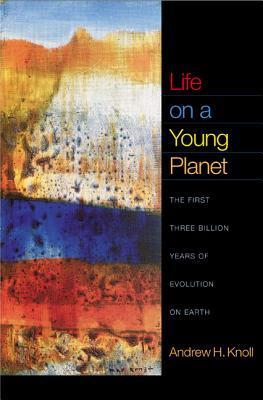
1. Life on a Young Planet: The First Three Billion Years of Evolution on Earth (Princeton Science Library)
By: Andrew H. Knoll
Format: 288 pages, Paperback
Australopithecines, dinosaurs, trilobites--such fossils conjure up images of lost worlds filled wit… read more
Want to Read $ 9.99Similar categories in Andrew H. Knoll's Life on a Young Planet: The First Three Billion Years of Evolution on Earth (Princeton Science Library) book and Lars Chittka's The Mind of a Bee
- biology
- nonfiction
- nature
- science
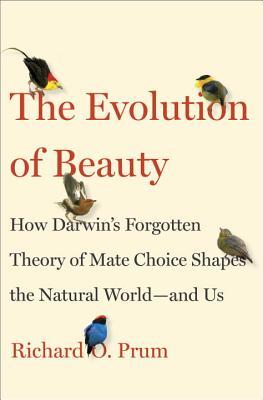
2. The Evolution of Beauty: How Darwin's Forgotten Theory of Mate Choice Shapes the Animal World—And Us
By: Richard O. Prum
Format: 448 pages, Hardcover
A major reimagining of how evolutionary forces work, revealing how mating preferences--what Darwin … read more
Want to Read $ 13.99Similar categories in Richard O. Prum's The Evolution of Beauty: How Darwin's Forgotten Theory of Mate Choice Shapes the Animal World—And Us book and Lars Chittka's The Mind of a Bee
- audiobook
- biology
- animals
- psychology
- nonfiction
- nature
- science
"Desire for beauty will endure and undermine the desire for truth."-Richard O. Prum, The Evolution of Beauty: How Darwin's Forgotten Theory of Mate Choice Shapes the Animal World—And Us
"In a Fisherian world, animals are slaves to evolutionary fashion, evolving extravagant and arbitrary displays and tastes that are all "meaningless"; they do not involve anything other than perceived …"-Richard O. Prum, The Evolution of Beauty: How Darwin's Forgotten Theory of Mate Choice Shapes the Animal World—And Us
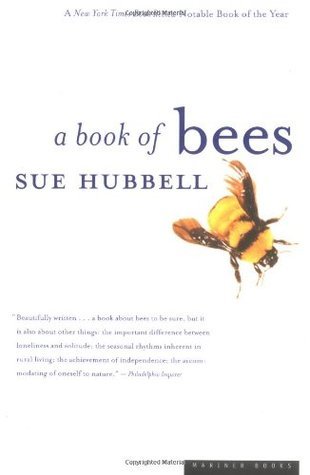
3. A Book Of Bees: And How to Keep Them
By: Sue Hubbell
Format: 208 pages, Paperback
A New York Times Notable Book, Sue Hubbell's A Book of Bees is “a melodious mix of memoir, nature j… read more
Want to Read $ 10.73Similar categories in Sue Hubbell's A Book Of Bees: And How to Keep Them book and Lars Chittka's The Mind of a Bee
- audiobook
- biography
- biology
- animals
- nonfiction
- nature
- science
"I like pulling on a baggy bee suit, forgetting myself and getting as close to the bees' lives as they will let me, remembering in the process that there is more to life than the merely human."-Sue Hubbell, A Book Of Bees: And How to Keep Them
"The only time I ever believed that I knew all there was to know about beekeeping was the first year I was keeping them. Every year since I’ve known less and less and have accepted the humbling truth …"-Sue Hubbell, A Book Of Bees: And How to Keep Them
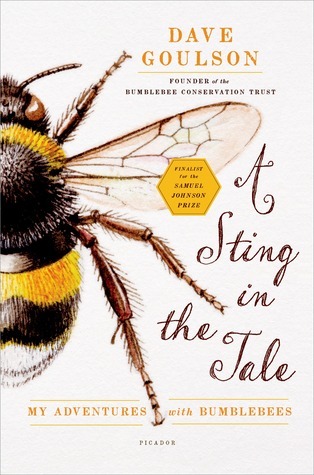
4. A Sting in the Tale: My Adventures with Bumblebees
By: Dave Goulson
Format: None pages, Hardcover
One man's quest to save the bumblebee. Dave Goulson has always been obsessed with wildlife, from hi… read more
Want to ReadSimilar categories in Dave Goulson's A Sting in the Tale: My Adventures with Bumblebees book and Lars Chittka's The Mind of a Bee
- biology
- animals
- nonfiction
- nature
- science
5. The Kingdom of God Is Within You
By: Constance Garnett , Leo Tolstoy
Format: None pages, Paperback
Banned in Russia, Tolstoy's The Kingdom of God Is Within Youwas deemed a threat to church and state… read more
Want to ReadSimilar categories in Constance Garnett's The Kingdom of God Is Within You book and Lars Chittka's The Mind of a Bee
- philosophy
- nonfiction
6. Restoration Agriculture
By: Mark Shepard
Format: 78 pages, Paperback
Around the globe most people get their calories from annual agriculture - plants that grow fast for… read more
Want to ReadSimilar categories in Mark Shepard's Restoration Agriculture book and Lars Chittka's The Mind of a Bee
7. Honeybee Democracy
By: Thomas D. Seeley
Format: 54 pages, Hardcover
Honeybees make decisions collectively--and democratically. Every year, faced with the life-or-death… read more
Want to ReadSimilar categories in Thomas D. Seeley's Honeybee Democracy book and Lars Chittka's The Mind of a Bee
8. Another Day in the Death of America: A Chronicle of Ten Short Lives
By: Gary Younge
Format: None pages, Hardcover
On an average day in America, seven children and teens will be shot dead. In Another Day in the Dea… read more
Want to ReadSimilar categories in Gary Younge's Another Day in the Death of America: A Chronicle of Ten Short Lives book and Lars Chittka's The Mind of a Bee
9. Our Native Bees: North America’s Endangered Pollinators and the Fight to Save Them
By: None
Format: 255 pages, Hardcover
All the buzz about North America's bees Honey bees get all the press, but the fascinating story of … read more
Want to ReadSimilar categories in None's Our Native Bees: North America’s Endangered Pollinators and the Fight to Save Them book and Lars Chittka's The Mind of a Bee

10. Entangled Life: How Fungi Make Our Worlds, Change Our Minds & Shape Our Futures
By: Merlin Sheldrake
Format: 352 pages, Hardcover
There is a lifeform so strange and wondrous that it forces us to rethink how life works…Neither pla… read more
Want to Read $ 9.99Similar categories in Merlin Sheldrake's Entangled Life: How Fungi Make Our Worlds, Change Our Minds & Shape Our Futures book and Lars Chittka's The Mind of a Bee
- audiobook
- ecology
- biology
- nonfiction
- nature
- science
"I have tried to find ways to enjoy the ambiguities that fungi present, but it's not always easy to be comfortable in the space created by open questions. Agoraphobia can set in. It's tempting to hide…"-Merlin Sheldrake, Entangled Life: How Fungi Make Our Worlds, Change Our Minds & Shape Our Futures
"Anthropomorphism is usually thought of as an illusion that arises like a blister in soft human minds: untrained, undisciplined, unhardened. There are good reasons for this: when we humanise the world…"-Merlin Sheldrake, Entangled Life: How Fungi Make Our Worlds, Change Our Minds & Shape Our Futures
"Fungi make worlds. They also unmake them. There are lots of ways to catch them in the act. When you cook mushroom soup, or just eat it. When you go out gathering mushrooms, or buy them. When you ferm…"-Merlin Sheldrake, Entangled Life: How Fungi Make Our Worlds, Change Our Minds & Shape Our Futures

11. A Brief History of Intelligence: Evolution, AI, and the Five Breakthroughs That Made Our Brains
By: Max Solomon Bennett
Format: 432 pages, Hardcover
Equal parts Sapiens , Behave, and Superintelligence , but wholly original in scope, A Brief History… read more
Want to Read $ 17.99Similar categories in Max Solomon Bennett's A Brief History of Intelligence: Evolution, AI, and the Five Breakthroughs That Made Our Brains book and Lars Chittka's The Mind of a Bee
- biology
- nonfiction
- psychology
- science

12. The Rise and Reign of the Mammals: A New History, from the Shadow of the Dinosaurs to Us
By: Steve Brusatte
Format: 528 pages, Hardcover
In his acclaimed bestseller The Rise and Fall of the Dinosaurs, American paleontologist Steve Brusa… read more
Want to Read $ 17.99Similar categories in Steve Brusatte's The Rise and Reign of the Mammals: A New History, from the Shadow of the Dinosaurs to Us book and Lars Chittka's The Mind of a Bee
- audiobook
- biology
- animals
- nonfiction
- nature
- science

13. Wild New World: The Epic Story of Animals and People in America
By: Dan Flores
Format: 448 pages, Hardcover
Winner of the 2023 Rachel Carson Environment Book Award Shortlisted for the 2023 Phi Beta Kappa So… read more
Want to Read $ 9.99Similar categories in Dan Flores's Wild New World: The Epic Story of Animals and People in America book and Lars Chittka's The Mind of a Bee
- science
- animals
- nonfiction
- nature
- audiobook
"The prescription I've come to seems to be this. Know the heaven and earth that was, but experience the world that is."-Dan Flores, Wild New World: The Epic Story of Animals and People in America
"Our disruption of ecologies around the world isn't just threatening wildife extinctions. It's posing an existential threat to our own species."-Dan Flores, Wild New World: The Epic Story of Animals and People in America
"And it wasn't just passenger pigeons and buffalo. A legacy of animal cleansing was visible everywhere you looked in the United States of the 1920s."-Dan Flores, Wild New World: The Epic Story of Animals and People in America
"...we Americans have never been good at accepting blame for screwing up the world. Surely the gods, or the government, or the Chinese, or the sun! must be doing this. It can't be us."-Dan Flores, Wild New World: The Epic Story of Animals and People in America

14. An Immense World: How Animal Senses Reveal the Hidden Realms Around Us
By: Ed Yong
Format: 464 pages, Hardcover
A grand tour through the hidden realms of animal senses that will transform the way you perceive th… read more
Want to Read $ 4.99Similar categories in Ed Yong's An Immense World: How Animal Senses Reveal the Hidden Realms Around Us book and Lars Chittka's The Mind of a Bee
- audiobook
- biology
- animals
- psychology
- nonfiction
- nature
- science
"It's ironic that we associate taste with connoisseurship, subtlety, and fine discrimination when it is among the coarsest of senses."-Ed Yong, An Immense World: How Animal Senses Reveal the Hidden Realms Around Us
"We are closer than ever to understanding what it is like to be another animal, but we have made it harder than ever for other animals to be."-Ed Yong, An Immense World: How Animal Senses Reveal the Hidden Realms Around Us
"Earth teems with sights and textures, sounds and vibrations, smells and tastes, electric and magnetic fields. But every animal can only tap into a small fraction of realities fullness. Each is enclos…"-Ed Yong, An Immense World: How Animal Senses Reveal the Hidden Realms Around Us
"A striking pattern emerged on days with the most intense solar storms, grey whales were 4 times more likely to beach themselves. This correlation doesn't prove that whales have a compass but it stron…"-Ed Yong, An Immense World: How Animal Senses Reveal the Hidden Realms Around Us

15. The Light Eaters: How the Unseen World of Plant Intelligence Offers a New Understanding of Life on Earth
By: Zoë Schlanger
Format: 304 pages, Hardcover
Award-winning environment and science reporter Zoë Schlanger delivers a groundbreaking work of popu… read more
Want to Read $ 14.99Similar categories in Zoë Schlanger's The Light Eaters: How the Unseen World of Plant Intelligence Offers a New Understanding of Life on Earth book and Lars Chittka's The Mind of a Bee
- audiobook
- ecology
- biology
- nonfiction
- nature
- science
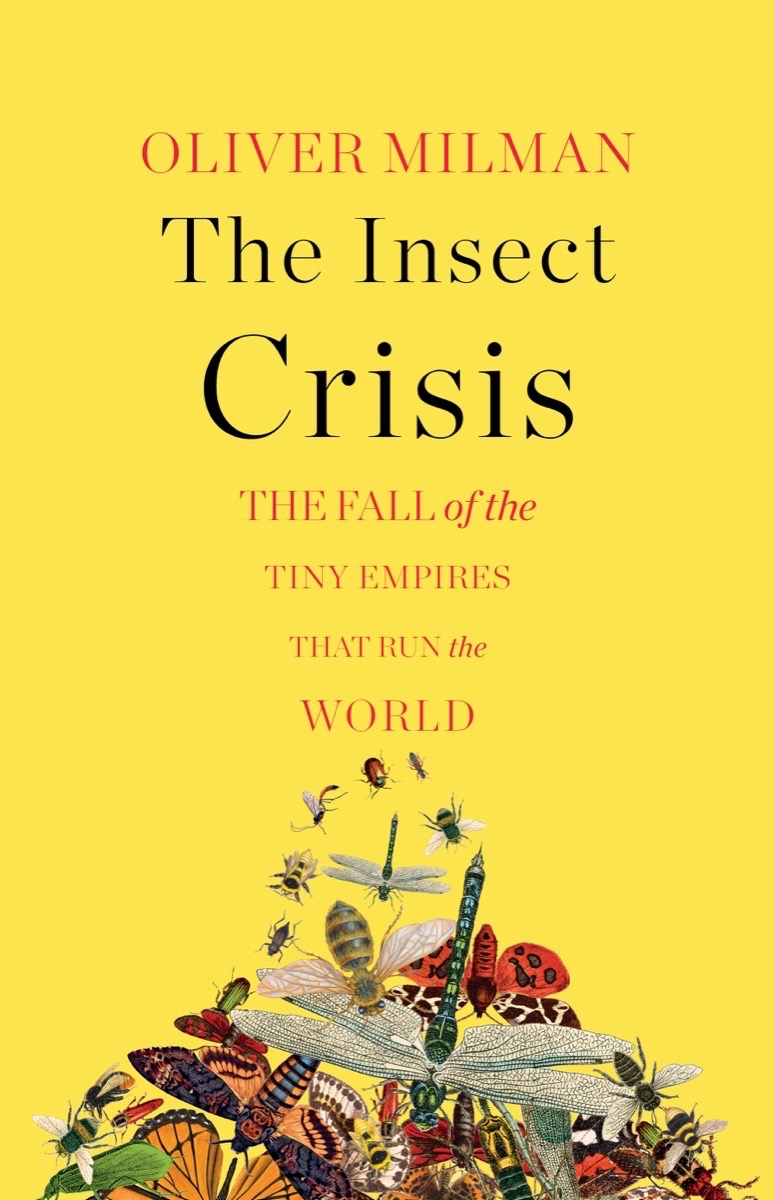
16. The Insect Crisis: The Fall of the Tiny Empires That Run the World
By: Oliver Milman
Format: 272 pages, Hardcover
From ants scurrying under leaf litter to bees able to fly higher than Mount Kilimanjaro, insects ar… read more
Want to Read $ 9.99Similar categories in Oliver Milman's The Insect Crisis: The Fall of the Tiny Empires That Run the World book and Lars Chittka's The Mind of a Bee
- audiobook
- ecology
- biology
- animals
- nonfiction
- nature
- science

17. What an Owl Knows: The New Science of the World's Most Enigmatic Birds
By: Jennifer Ackerman
Format: 352 pages, Hardcover
An instant New York Times bestseller! From the author of The Genius of Birds and The Bird Way, a… read more
Want to Read $ 4.99Similar categories in Jennifer Ackerman's What an Owl Knows: The New Science of the World's Most Enigmatic Birds book and Lars Chittka's The Mind of a Bee
- audiobook
- biology
- animals
- nonfiction
- nature
- science
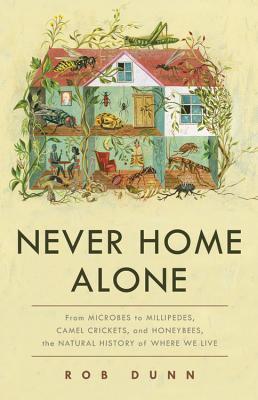
18. Never Home Alone: From Microbes to Millipedes, Camel Crickets, and Honeybees, the Natural History of Where We Live
By: Rob Dunn
Format: 336 pages, Hardcover
A natural history of the wilderness in our homes, from the microbes in our showers to the crickets … read more
Want to Read $ 12.99Similar categories in Rob Dunn's Never Home Alone: From Microbes to Millipedes, Camel Crickets, and Honeybees, the Natural History of Where We Live book and Lars Chittka's The Mind of a Bee
- audiobook
- ecology
- biology
- animals
- nonfiction
- nature
- science
"I know what I want my dust to say about me."-Rob Dunn, Never Home Alone: From Microbes to Millipedes, Camel Crickets, and Honeybees, the Natural History of Where We Live
"Every surface; every bit of air; every bit of water in your home is alive. The average house has thousands of species."-Rob Dunn, Never Home Alone: From Microbes to Millipedes, Camel Crickets, and Honeybees, the Natural History of Where We Live

19. Silent Earth: Averting the Insect Apocalypse
By: Dave Goulson
Format: 336 pages, Hardcover
Insects are essential for life as we know it. As they become more scarce, our world will slowly gri… read more
Want to Read $ 3.99Similar categories in Dave Goulson's Silent Earth: Averting the Insect Apocalypse book and Lars Chittka's The Mind of a Bee
- audiobook
- ecology
- biology
- animals
- nonfiction
- nature
- science

20. What's Gotten Into You: The Story of Your Body's Atoms, from the Big Bang Through Last Night's Dinner
By: Dan Levitt
Format: 400 pages, Hardcover
For readers of Bill Bryson, Neil deGrasse Tyson and Siddhartha Mukherjee, a wondrous, wildly ambiti… read more
Want to Read $ 12.99Similar categories in Dan Levitt's What's Gotten Into You: The Story of Your Body's Atoms, from the Big Bang Through Last Night's Dinner book and Lars Chittka's The Mind of a Bee
- science
- biology
- nonfiction
- nature
- audiobook

21. Pests: How Humans Create Animal Villains
By: Bethany Brookshire
Format: 384 pages, Hardcover
An engrossing and revealing study of why we deem certain animals “pests” and others not—from cats t… read more
Want to Read $ 12.99Similar categories in Bethany Brookshire's Pests: How Humans Create Animal Villains book and Lars Chittka's The Mind of a Bee
- audiobook
- biology
- animals
- nonfiction
- nature
- science

22. The Pattern Seekers: How Autism Drives Human Invention
By: Simon Baron-Cohen
Format: 272 pages, Hardcover
In The Pattern Seekers, Cambridge University psychologist Simon Baron-Cohen makes a case that autis… read more
Want to Read $ 12.99Similar categories in Simon Baron-Cohen's The Pattern Seekers: How Autism Drives Human Invention book and Lars Chittka's The Mind of a Bee
- audiobook
- nonfiction
- psychology
- science

23. The Mind of a Bee
By: Lars Chittka
Format: 272 pages, Hardcover
A rich and surprising exploration of the intelligence of bees Most of us are aware of the hive min… read more
Want to Read $ 9.99Similar categories in Lars Chittka's The Mind of a Bee book and Lars Chittka's The Mind of a Bee
- audiobook
- ecology
- biography
- biology
- animals
- psychology
- philosophy
- nonfiction
- nature
- science
"American writer and biologist Frederick Kenyon (1867-1941) was the first to explore the inner workings of the bee brain. His 1896 study, in which he managed to dye and characterize numerous types of …"-Lars Chittka, The Mind of a Bee

24. Spying on Whales: The Past, Present, and Future of Earth's Most Awesome Creatures
By: Nick Pyenson
Format: 336 pages, Hardcover
The Smithsonian's star paleontologist takes us to the ends of the earth and to the cutting edge of … read more
Want to Read $ 11.99Similar categories in Nick Pyenson's Spying on Whales: The Past, Present, and Future of Earth's Most Awesome Creatures book and Lars Chittka's The Mind of a Bee
- audiobook
- biology
- animals
- nonfiction
- nature
- science
"We, as paleontologists, are used to asking questions without having all the facts."-Nick Pyenson, Spying on Whales: The Past, Present, and Future of Earth's Most Awesome Creatures
"We sent whalesong into interstellar space because the creatures that sing these songs are superlative beings that fill us with awe, terror, and affection. We have hunted them for thousands of years a…"-Nick Pyenson, Spying on Whales: The Past, Present, and Future of Earth's Most Awesome Creatures

25. If Nietzsche Were a Narwhal: What Animal Intelligence Reveals About Human Stupidity
By: Justin Gregg
Format: 320 pages, Hardcover
“A dazzling, delightful read on what animal cognition can teach us about our own mental shortcoming… read more
Want to Read $ 11.99Similar categories in Justin Gregg's If Nietzsche Were a Narwhal: What Animal Intelligence Reveals About Human Stupidity book and Lars Chittka's The Mind of a Bee
- audiobook
- biology
- animals
- psychology
- philosophy
- nonfiction
- nature
- science

26. Planta Sapiens: The New Science of Plant Intelligence
By: Paco Calvo
Format: 304 pages, Hardcover
An astonishing window into the inner world of plants, and the cutting-edge science in plant intelli… read more
Want to Read $ 9.99Similar categories in Paco Calvo's Planta Sapiens: The New Science of Plant Intelligence book and Lars Chittka's The Mind of a Bee
- science
- biology
- nonfiction
- nature
- audiobook
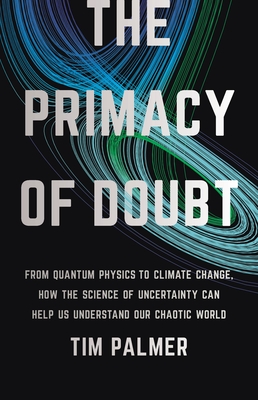
27. The Primacy of Doubt: From Quantum Physics to Climate Change, How the Science of Uncertainty Can Help Us Understand Our Chaotic World
By: Tim Palmer
Format: 320 pages, Hardcover
“Quite possibly the best popular science book I’ve ever read” ( Popular Science ) shows how the too… read more
Want to Read $ 18.99Similar categories in Tim Palmer's The Primacy of Doubt: From Quantum Physics to Climate Change, How the Science of Uncertainty Can Help Us Understand Our Chaotic World book and Lars Chittka's The Mind of a Bee
- philosophy
- nonfiction
- science

28. Endless Forms: The Secret World of Wasps
By: Seirian Sumner
Format: 400 pages, Hardcover
“A book that draws us in to the strange beauty of what we so often run away from.” — Robin Ince, au… read more
Want to Read $ 19.99Similar categories in Seirian Sumner's Endless Forms: The Secret World of Wasps book and Lars Chittka's The Mind of a Bee
- audiobook
- ecology
- biology
- animals
- nonfiction
- nature
- science
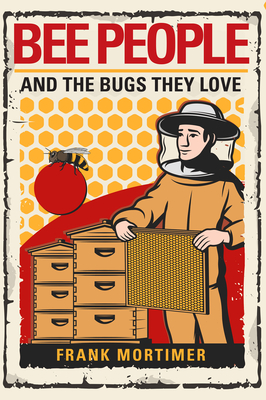
29. Bee People and the Bugs They Love
By: Frank Mortimer
Format: 304 pages, Hardcover
A fascinating foray into the obsessions, friendships, scientific curiosity, misfortunes and rewards… read more
Want to Read $ 9.99Similar categories in Frank Mortimer's Bee People and the Bugs They Love book and Lars Chittka's The Mind of a Bee
- science
- animals
- nonfiction
- nature
- audiobook
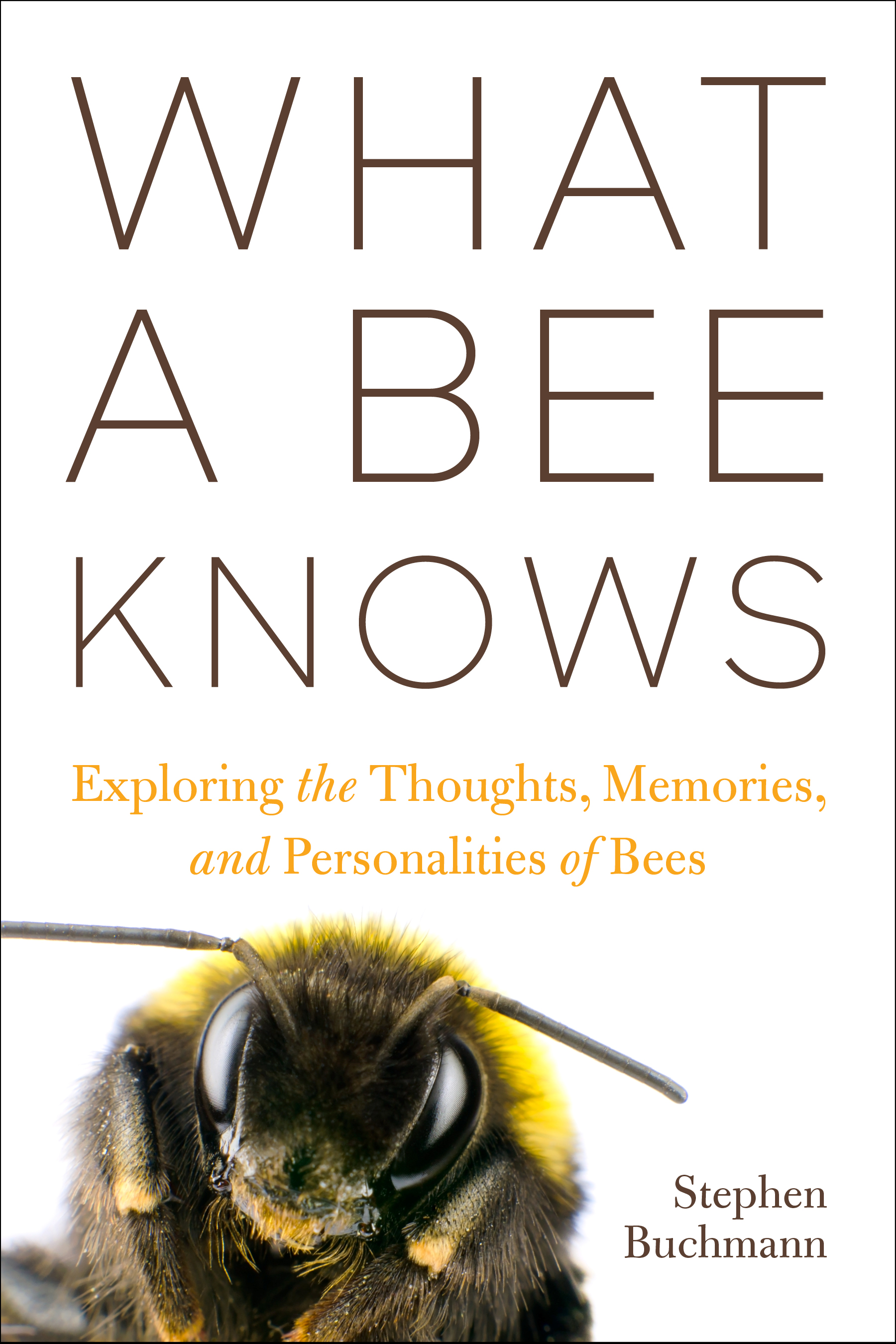
30. What a Bee Knows: Exploring the Thoughts, Memories, and Personalities of Bees
By: Stephen Buchmann
Format: 363 pages, Kindle Edition
None read more
Want to Read $ 20.36Similar categories in Stephen Buchmann's What a Bee Knows: Exploring the Thoughts, Memories, and Personalities of Bees book and Lars Chittka's The Mind of a Bee
- biology
- animals
- nonfiction
- nature
- science

31. Birds and Us: A 12,000 Year History, from Cave Art to Conservation
By: Tim Birkhead
Format: 400 pages, Hardcover
Award-winning writer and ornithologist Tim Birkhead takes us on an epic and dazzling journey throug… read more
Want to Read $ 19.25Similar categories in Tim Birkhead's Birds and Us: A 12,000 Year History, from Cave Art to Conservation book and Lars Chittka's The Mind of a Bee
- audiobook
- biology
- animals
- nonfiction
- nature
- science


